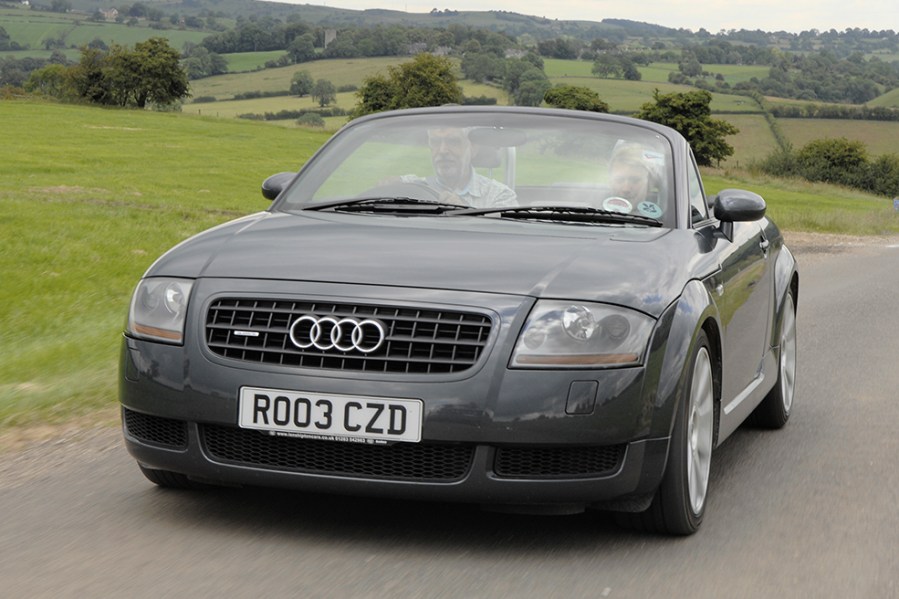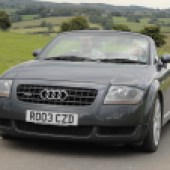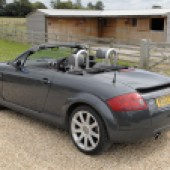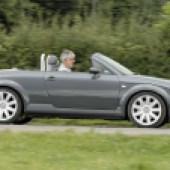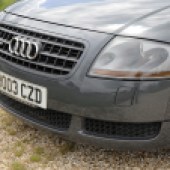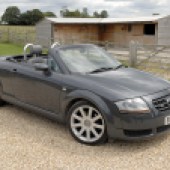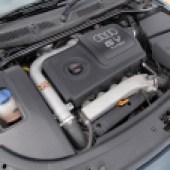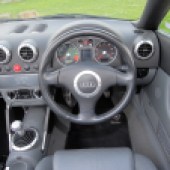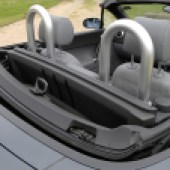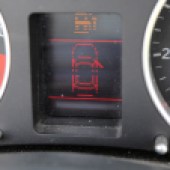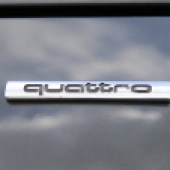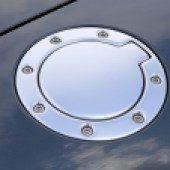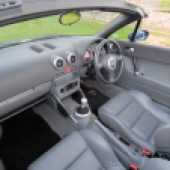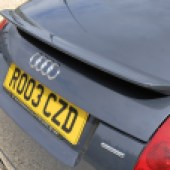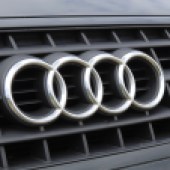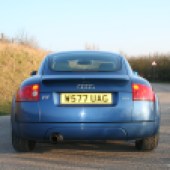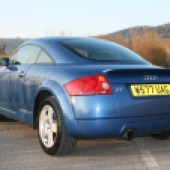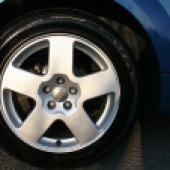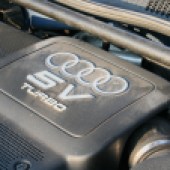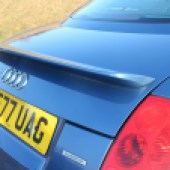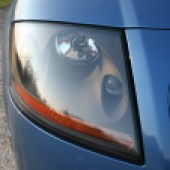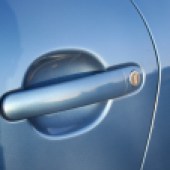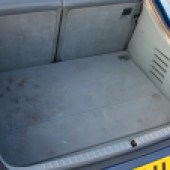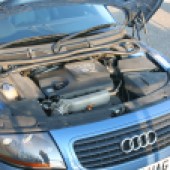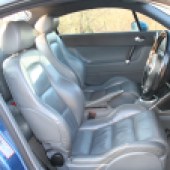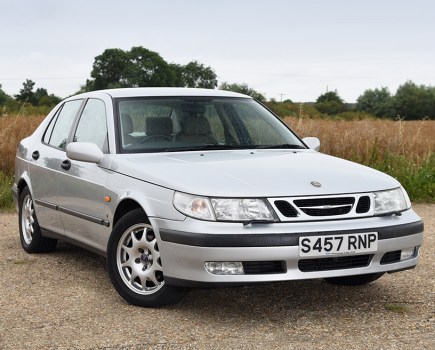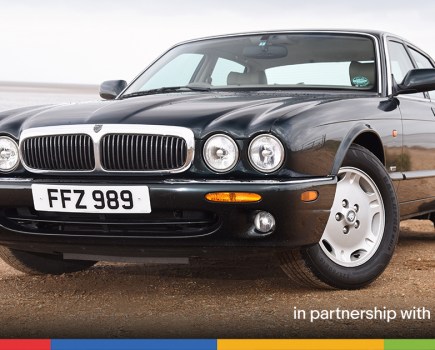Still a real used bargain despite its design icon status, the first-generation Audi TT is a fantastic modern classic sports car
Words: Paul Wager
The Audi TT is one of those rare cars which make it from motor show concept to production reality very little changed, while also being the perfect example of how ‘platform sharing’ can be used to good effect. VW Group’s PQ34 is commonly known as the Mk4 Golf platform since that was the highest-volume car to be built on it, but it also formed the bones of the humble Skoda Octavia, the ‘Spanish Alfa’ Seat Leon and Toledo, the controversial New Beetle and two upmarket Audis: the A3 and TT.
The TT was a radical new departure for previously staid Audi, whose previous coupe offering had been a simple two-door version of the Audi 80.
A car “radical in design, but suitable for everyday use” was the basic design brief and the chunky broad-shouldered style was certainly arresting as well as being very Germanic. Indeed, much was made at the time of the design showing Bauhaus influence, the reference relating to the prewar German design movement which required form to follow function. The proportions and curves also evoked the lines of the 1930s ‘Silver Arrows’ racers of Audi’s ancestor brand Auto Union.
Launched as a coupe in September 1998 and arriving in UK showrooms from February 1999, the TT was offered as a convertible from August 1999, engine options limited to two versions of the VW Group EA113 four-cylinder, 20-valve turbo rated at 180bhp or 225bhp. Audi’s Quattro four-wheel drive was offered as an option on the 180bhp model and standard on the 225bhp car.
In early 2002 the TT was facelifted with a three-bar grille, 25mm lower suspension, aluminium gearknob, 18-inch wheels and titanium lamp inserts on the 225 model. The 247bhp 3.2-litre V6 engine was added to the range in July 2003 with the six-speed DSG gearbox and wit the manual box from January 2004.
In March 2003 an entry-level 150bhp version of the four-cylinder turbo was added, offered only in front-wheel drive form.
In April 2005, the limited-edition TT Quattro Sport was offered, running a 237bhp version of the 1.8 turbo together with weight-saving measures and fixed Recaro racing seats. In 2005 the 150bhp engine was uprated to 160bhp and the 180 model to 190bhp, the first cars wearing the 55 registration.
Production of the first-generation ‘8N’ TT ended in June 2006, with its replacement an all-new design.
Bodywork
Really scruffy Audi TTs are still an unusual sight and Audi’s galvanised bodywork does tend to resist the British climate well, but it’s still worth prodding and poking the usual areas like sills, inner arches and the forward lower edge of the rear arch where it meets the sill. Some cars suffered from imperfect anti-corrosion coating on the aluminium inserts edging the roof panel which can cause unsightly bubbling.
The Audi TT was famously recalled early in its life after a series of high-speed cornering crashes, the official fix being upgraded standard-fit ESP stability control and a rear ducktail spoiler. Some modified cars have had the spoiler removed, in which case you’ll want to reinstate it.
Like many VWs and Audis of the era, the Audi TT uses plastic headlight lenses which will cloud over from the effects of UV. It’s a simple DIY task to flat the lenses back with fine wet and dry paper and then polish them back to a clear gloss with a polisher in an electric drill. Condensation inside the lamp units can mean faulty seals but again it’s a DIY job to dry and reseal them.
Roadsters come with different issues including the tendency of the drains to block up in the ‘drip tray’ arrangement at the rear corners of the roof. The drains are supposed to exit ahead of the rear wheelarch but when they’re blocked, water will overflow and soak the carpets. The door seals are often incorrectly blamed for the problem, although they can also cause wet front carpets.
On convertibles, make sure you look at the car with the roof up, both to ensure the electric mechanism works and to check the condition of the roof itself. It’s common for wear lines to develop along the folding creases.
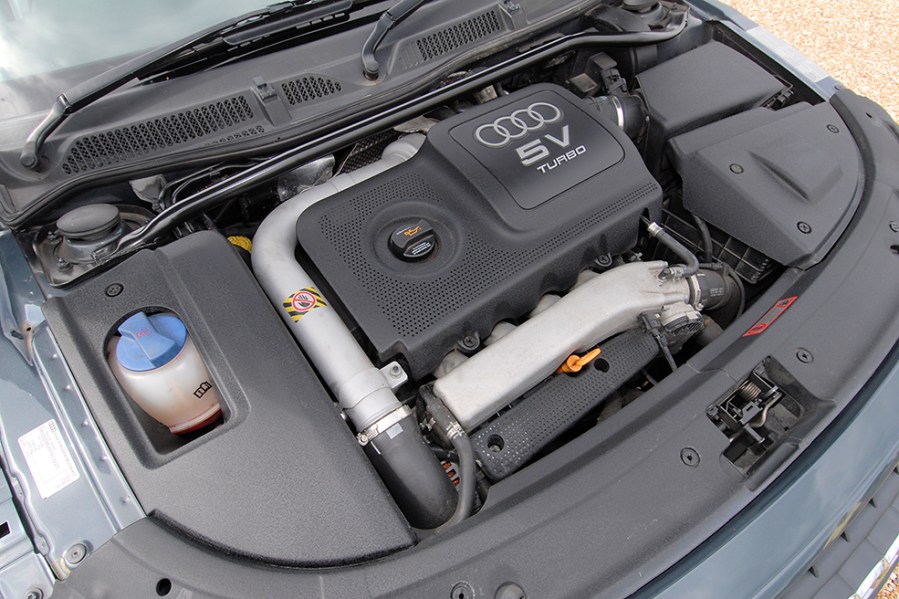
Engine and transmission
VW’s 20-valve turbo is a robust unit but uses a cam belt which will need changing every 60,000 miles, most specialists suggesting that the tensioners and water pump are changed at the same time. The V6 Audi TT meanwhile uses a chain, but it’s not all good news since replacement is a labour-intensive job which can work out at £1000.
It’s common to find the 180bhp cars remapped to provide the power of the 225bhp model but the two engines aren’t identical: the 225bhp unit came with a second intercooler, a larger turbocharger, different inlet and exhaust manifolding and uprated pistons to accommodate the increased 1.0bar boost compared to the 0.7bar of the 180bhp unit.
Use your own judgement as to how well any tuning work has been done and be wary of anything outrageous. Misfires will generally be down to failed coil packs, while flat performance will often be caused by a failing MAF sensor.
Regular oil and filter changes are crucial on the turbo engines as they make more demands of the oil. Check for blue smoke on startup and if the owner is willing, ask them disconnect the boost pipe from turbo to throttle body to see whether it’s full of oil. A light mist is fine but excessive contamination suggests problems.
Boost leaks are very common on the turbo engines too, either from perished or split hoses or loose hose clips. Drive a few examples to get an idea of how they should feel and listen for a hissing under boost. Silicone hoses are a common upgrade to solve the problem so don’t be put off by their aftermarket appearance.
Similarly, the engine includes a diverter valve (‘dump valve’) as standard to vent boost pressure when the throttle is snapped shut. The original black plastic valve has a habit of sticking, so is often replaced by a more durable metal aftermarket part.
A cam belt failure will destroy the engine and in general it’s not economically viable to rebuild it, a replacement engine being the cheaper option. It’s worth checking the engine number against the paper specification label found under the boot carpet to ascertain whether the car still has its original engine.
The two engines can be identified by the position of the throttle body: on the Audi TT 225 it’s on the right and on the 180 on the left.
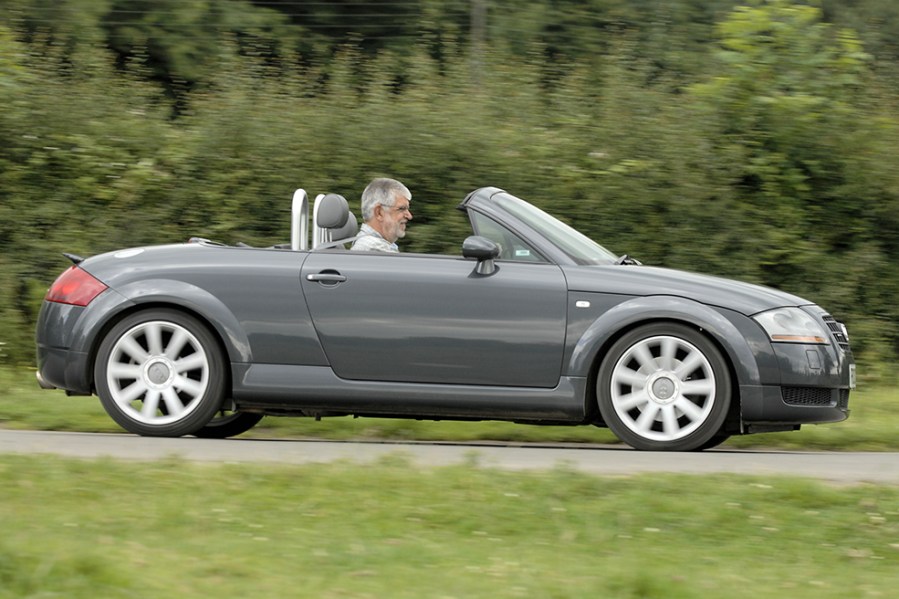
If one or more gears can’t be selected in the manual boxes, it’s possible that a rivet securing the shift fork has failed or that the fork itself has bent. It can be repaired but the labour involved in removing the gearbox from the car can make it expensive.
Unlike the mechanical system in older Audis, the Quattro TT models use a Haldex four-wheel drive system which sends most of the power to the front wheels until slip is detected, at which point the power split can be up to 60/40 front/rear.
The Haldex coupling itself requires regular oil changes to function properly: an oil change every 20,000 miles and oil and filter every 40,000. The coupling also suffers when the car is left standing for lengthy periods, so an oil and filter change is essential on a little-used car.
The DSG box on the V6 cars can be tricky, since this was the first generation of these gearboxes and they were known for being problematic. Slow gear engagement or shifting can be a fault with the ‘mechatronic’ unit, while failed oil coolers can also allow coolant to enter the gearbox.
It’s accepted that regular oil changes prolong the life of the DSG gearbox, specialists suggesting an interval of 40,000 miles or three years.
On all cars, check the condition of the CV boots on both ends of the driveshafts as a split boot will be an MoT failure.
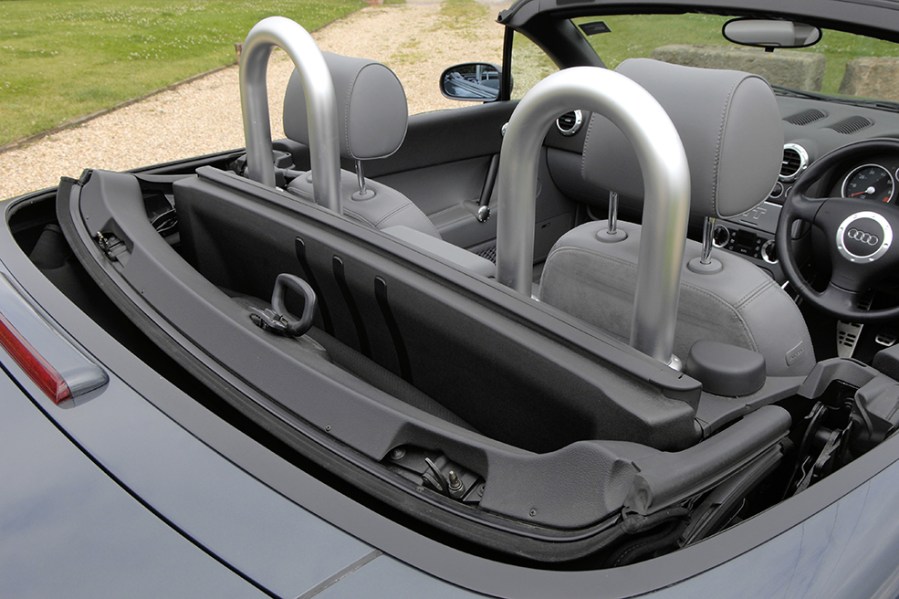
Suspension, steering and brakes
The original design for the anti-roll bar featured plastic collars which would eventually split when water seeped underneath, allowing the bar to move in its mount. Metal sleeved aftermarket replacements are available though. The drop links on the rear anti-roll bar can also wear over time and if they’re touching the dampers then they need replacing.
Balljoints can wear and broken coil springs are all too common on our potholed roads. Usually they break right at the end which can be hard to see, but judge whether the car sits level at both ends.
In typical VW Group fashion worn strut tops will be obvious from the noise they make, but you can also check visually: the strut tops should sit snugly against the metalwork, but tend to rise up as the mount ages and compresses. A large gap between the plastic strut top caps and the bodywork suggests replacement is due.
Brakes are pretty familiar and the usual problems will be things like seized or sticking pistons which are simple to sort with an exchange caliper.
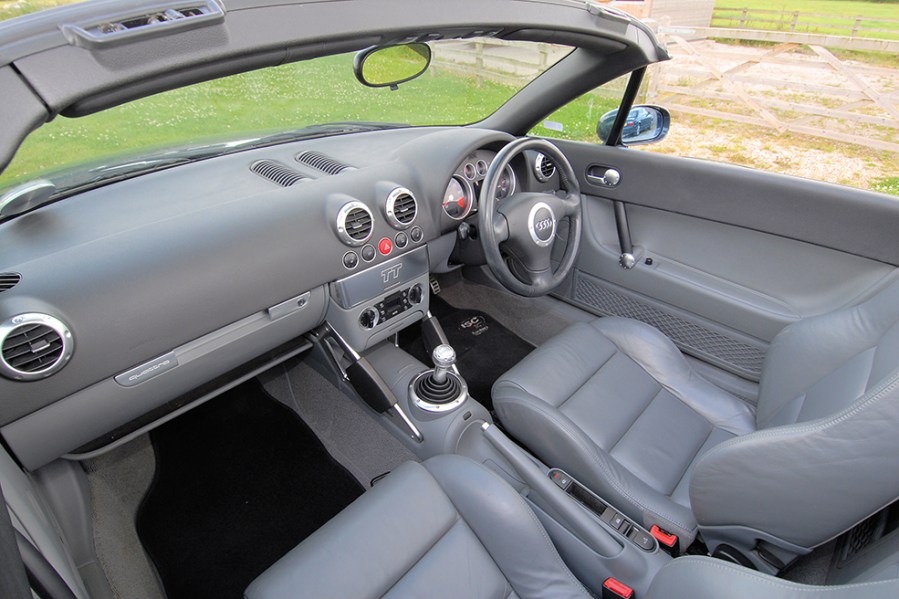
Interior, trim and electronics
The Audi TT is well known for the instrument display panels failing, the common issue being the digital readouts becoming illegible. Other issues can include stuttering needles, random readings and pulsing of the display illumination or even the car refusing to start in cold weather but a repair is generally under £200, with some specialists offering a while-you-wait service.
If you suspect the fuel gauge is misbehaving, compare it with the range reading on the ‘DIS’ display between the dials. The coolant temperature can be checked with a specific sequence of button presses on the climate control panel and then compared with the gauge.
Audi TT: our verdict
Hunt out a tidy standard example with a respectable history and the Audi TT makes for a great usable modern classic. Durable enough to stand living outside all year round, it’s brisk enough to be fun even by modern standards and the four-wheel drive makes it really very useful in the depths of winter.
We’d go for a quattro model which neatly sidesteps the entry-level 150/160 engines and simply buy on condition when choosing between the 180 and 225 – a ropey 225 won’t be as enjoyable as a nicely sorted 180. As for the choice of roadster or coupe, that’s a personal thing but remember the coupe does have a handy hatchback and rear seats.
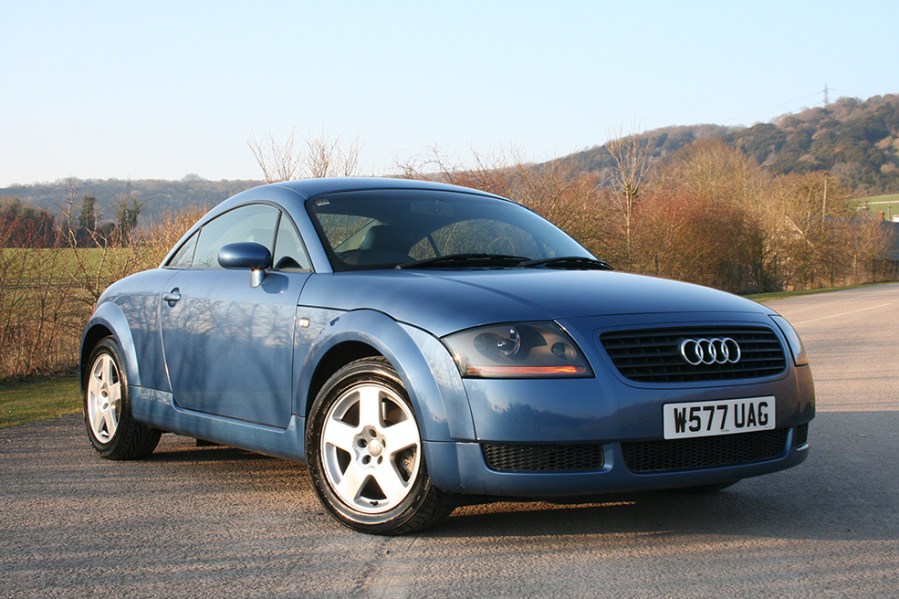
Audi TT timeline
1995
Audi TT launched at Frankfurt show
1998
TT coupe is launched in the UK
1999
TT roadster is launched in the UK
2002
V6 3.2 engine added
DSG gearbox optional on V6 model
2002
TT facelifted with three-bar grille, lower suspension and 18-inch wheels
2004
Entry level 150bhp model launched
2005
Quattro Sport launched
150 engine uprated to 160bhp, 180 model uprated to 190bhp
2006
Production of the first-generation TT ends in June

